Hollywood in its Golden Age was filled with beautiful, glamorous apartments, residence hotels and bungalow courts, quite a few of which have survived the harsh winds of time, neglect, temblors and the questionable taste of subsequent owners.
But the site of that most storied of all the Hollywood residences, the legendary Garden of Allah (8152 Sunset Boulevard), is today a bland mini-mall anchored by a McDonald’s restaurant in the post-modern style. Popular myth has it that it was demolition of the Garden of Allah and its beautiful pool and fountains, mature gardens, handsome villas and culture of creativity that inspired Joni Mitchell to write “Big Yellow Taxi” — “they paved paradise, put up a parking lot.” If that isn’t true, it ought to be. 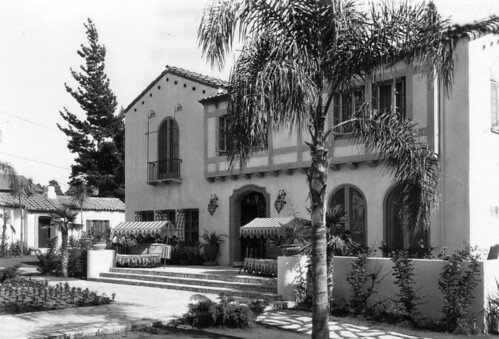
Photo: Los Angeles Public Library
The Garden of Allah fell to the wrecker in summer 1959. But on April 9, 1940, when the census enumerator dropped by to take the hotel’s temperature, it was at its height as an urbane social center, the only place suitable for a certain class of extraordinary person to make their Hollywood home.
The census record is illuminating and more than a little heartbreaking as a suggestive portrait of a vanished time. The first resident recorded is practically a novel in a single line:
Lerner, Herbert A. White, single, Louisiana-born, 29. His residence on April 1, 1935? ” At sea. Near Florida” Occupation? “First mate, private yacht.” Annual wages $1200.
This is the type of fascinating stranger one might make a friend of at the famous bar at the Garden of Allah. No wonder writers loved the place.
And yes, there are famous writers living at the Garden of Allah in the spring of 1940, and we’ll get to them, but just look at the variety of elevated humanity that was drawn to this seductive corner of the world.
A stock broker. A public utilities executive. A couple guys in advertising. Varied and sundry magazine hacks. A night club publicity manager. An actors’ agent. Alonzo F. Farrow and wife Edna, who run the joint ($3600/year for him). British film producer John Stafford. The beautiful Greta Nissen, a silent star that fell from favor, though not entirely, due to her strong Norwegian accent. Populist historian and pulp writer Harold Lamb, who must have been a hoot over a cup of grog. Irish novelist Liam O’Flaherty, slumming with film work. Edwin Justus Mayer, who wrote To Be or Not To Be.
And mostly clustered together near the bottom of the page, those grand Algonquin wits. George S. Kaufman, theatrical writer, 50, who declined to state his income. Robert C. Benchley, motion picture writer, $5000+ per annum. Alan Campbell and wife Dorothy P., for Parker, both movie writers, both earning what friend Benchley brings home. This was where the hard work got done, and steam was let off, before the cycle began again. What nights they must have had, and what days, beneath the ridiculous California sun, surrounded by geniuses and nincompoops, the lovely and the lost.
Once upon a time in Hollywood, this place was real, not imagined. Now it’s just real estate, a ring of shaggy palm trees around an asphalt lot. Pull in some time, park in the center, close your eyes and just breathe the air that once fed paradise. That grand moment has passed, and this moment can be rude and trying. But a more beautiful world is coming. It was ever thus.
Photo: Los Angeles Public Library

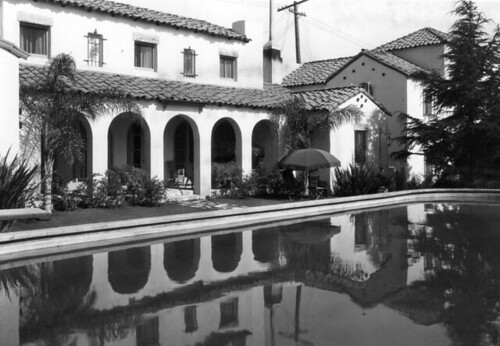



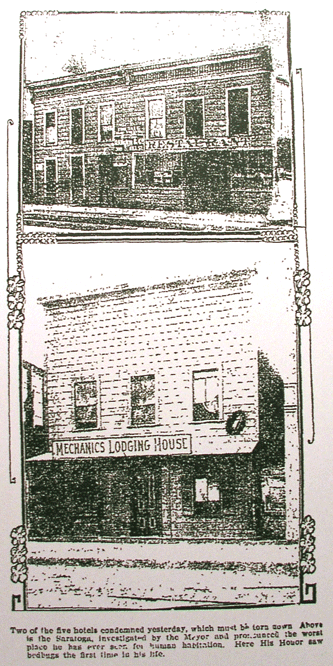

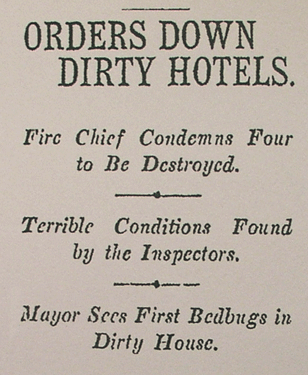 Much has been made of Bunker Hill, its rooming houses torn asunder, and of the wholesale postwar demolition of many a downtown landmark. Downtown hotels have fared the worst, though they limped along longest—the Lee, the Lankershim, the Gates, the Armondale, all held forth before being felled in recent memory. As much as we must blush at this collective ignominy, let us turn an eye back to some of our fallen comrades that predate, or were otherwise too shabby to be considered amongst, the brick and metal structures of our Gilded Age.
Much has been made of Bunker Hill, its rooming houses torn asunder, and of the wholesale postwar demolition of many a downtown landmark. Downtown hotels have fared the worst, though they limped along longest—the Lee, the Lankershim, the Gates, the Armondale, all held forth before being felled in recent memory. As much as we must blush at this collective ignominy, let us turn an eye back to some of our fallen comrades that predate, or were otherwise too shabby to be considered amongst, the brick and metal structures of our Gilded Age.




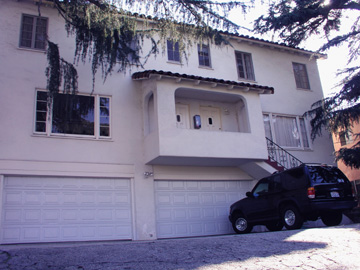
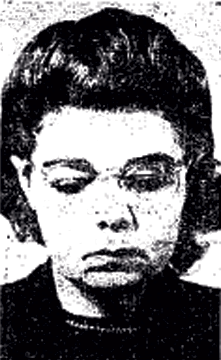 She was out carousing, divorced, jobless, though with, I’d wager, a mind still keen and ticking, before she was found nearly nude, beaten, and dragged for some way, near the Ducommun Street railroad right-of-way, here:
She was out carousing, divorced, jobless, though with, I’d wager, a mind still keen and ticking, before she was found nearly nude, beaten, and dragged for some way, near the Ducommun Street railroad right-of-way, here: 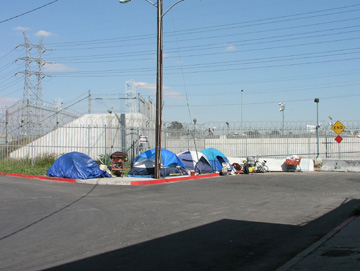 Evelyn, homeless, now has a homeless encampment on her site. So, then there’s this Tiernan character.
Evelyn, homeless, now has a homeless encampment on her site. So, then there’s this Tiernan character. 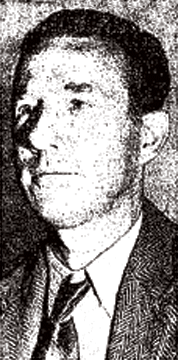 He’s twelve years Evelyn’s junior. A former employee of the Angelus Bowling and Billiard Recreation Center,
He’s twelve years Evelyn’s junior. A former employee of the Angelus Bowling and Billiard Recreation Center, 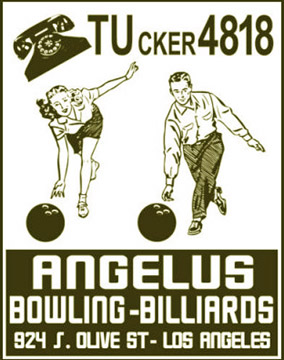 which is now a parking lot:
which is now a parking lot: 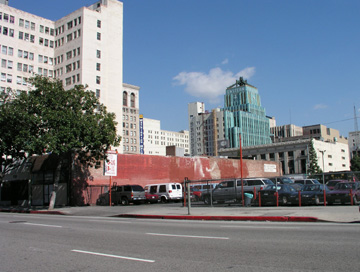 (for more on prewar bowling alleys, go
(for more on prewar bowling alleys, go 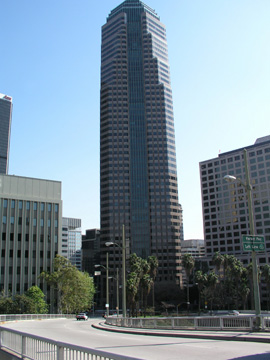 (Sanwa Bank Plaza, AC Martin, 1990) Never did find a vintage image of the Albany; some flavor of the wiped-out neighborhood–one block west:
(Sanwa Bank Plaza, AC Martin, 1990) Never did find a vintage image of the Albany; some flavor of the wiped-out neighborhood–one block west: 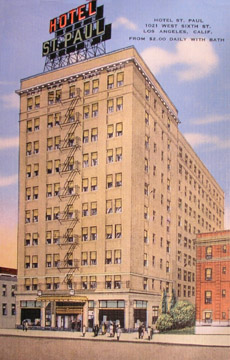 And one block east:
And one block east: 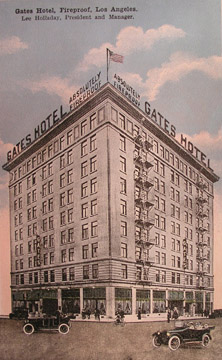 But why the hotel room? We don’t know. Tiernan didn’t live at the Albany. He lived at the Armondale, at 728 South Flower.
But why the hotel room? We don’t know. Tiernan didn’t live at the Albany. He lived at the Armondale, at 728 South Flower. 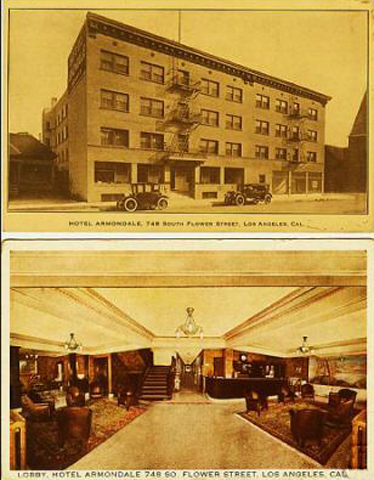 Its site today:
Its site today: 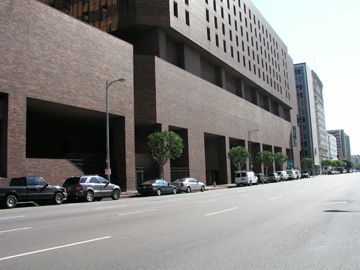 First off, what, already, is up with the Armondale Hotel? It has that “built on Indian burial ground” cachet that money can’t buy. Perhaps it was simply built over one of those giant magnets. The kind that attract ne’er-do-wells. The place had trouble attached from the get-go. Dale Carleton, developer and proprietor of the spanking-new 1914 Armondale, is sued by wifey Marie for a sizable share of his $250,000 net worth. Mrs. Carleton names a Ms. Helen Williams–Armondale telephone girl whose duties apparently went above and beyond the working of switchboard–as correspondent. 1919. Wilbert Garrison, 28, son of a wealthy publisher in New York, drove across country with a buddy and they holed up in the Armondale. A week later Wilbert left in his room his money, valuables, and a note indicating that he did not want to be a burden on others, and as such was ending his life. Despite the best efforts of the Nick Harris detective agency (who calls the cops in 1919), Wilbert is never found. 1930. Mrs. Louis Valenzuella, 40, ex-wife of Deputy Sheriff Valenzuella, is found dead in the Armondale of a suspected drug overdose. 1939. Washed-up boxer Louis Menney, 22, Armondale resident, is tackled by a priest after he sexually assaulted a 62 year-old woman in a church at 9th (now James M. Woods) and Green. Turns out he’d–moletsed? raped?–the papers will only mention “morals offenses”–a nine year-old in the church as well. Moreover, he’d done his business with a six year-old girl on the corner of 11th (now Chick Hearn) and Georgia, and also kidnapped and robbed an Agnes M—– and sexually assaulted a Margaret L—– in a church on West Adams; since the kidnapping charge is death penalty territory, we can only hope the Armondale’s most famous resident ended up in the proper hands.
First off, what, already, is up with the Armondale Hotel? It has that “built on Indian burial ground” cachet that money can’t buy. Perhaps it was simply built over one of those giant magnets. The kind that attract ne’er-do-wells. The place had trouble attached from the get-go. Dale Carleton, developer and proprietor of the spanking-new 1914 Armondale, is sued by wifey Marie for a sizable share of his $250,000 net worth. Mrs. Carleton names a Ms. Helen Williams–Armondale telephone girl whose duties apparently went above and beyond the working of switchboard–as correspondent. 1919. Wilbert Garrison, 28, son of a wealthy publisher in New York, drove across country with a buddy and they holed up in the Armondale. A week later Wilbert left in his room his money, valuables, and a note indicating that he did not want to be a burden on others, and as such was ending his life. Despite the best efforts of the Nick Harris detective agency (who calls the cops in 1919), Wilbert is never found. 1930. Mrs. Louis Valenzuella, 40, ex-wife of Deputy Sheriff Valenzuella, is found dead in the Armondale of a suspected drug overdose. 1939. Washed-up boxer Louis Menney, 22, Armondale resident, is tackled by a priest after he sexually assaulted a 62 year-old woman in a church at 9th (now James M. Woods) and Green. Turns out he’d–moletsed? raped?–the papers will only mention “morals offenses”–a nine year-old in the church as well. Moreover, he’d done his business with a six year-old girl on the corner of 11th (now Chick Hearn) and Georgia, and also kidnapped and robbed an Agnes M—– and sexually assaulted a Margaret L—– in a church on West Adams; since the kidnapping charge is death penalty territory, we can only hope the Armondale’s most famous resident ended up in the proper hands. 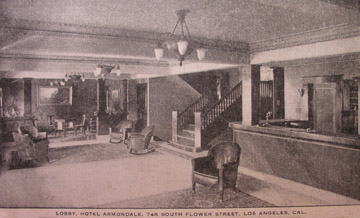 1948. Francis Sylvester, of the Armondale, works across the street at the Western Union at 741 South Flower. Sylvester wires untold sums in care of himself to small outlying towns, where there are no Western Union offices, and destroys the records of the transactions. And 1965. Percy Hatch, 65, who had been in the hotel since 1957, started talking crazy-talk. As in, a loggorhea of obscenities for two straight weeks. Behind the Armondale registration desk was manager Nancy Furlow, 62, who, finally fed up with her repeated warnings, reached for the phone, and was shot dead by Hatch with one bullet. Hatch therewith turned the gun on himself. Shortly thereafter the Armondale was felled and a rather ill-advised Broadway was built on the site. Now a Macy’s, it resembles a Dawn mall on a slow day. For more on this exercise in brown, please go
1948. Francis Sylvester, of the Armondale, works across the street at the Western Union at 741 South Flower. Sylvester wires untold sums in care of himself to small outlying towns, where there are no Western Union offices, and destroys the records of the transactions. And 1965. Percy Hatch, 65, who had been in the hotel since 1957, started talking crazy-talk. As in, a loggorhea of obscenities for two straight weeks. Behind the Armondale registration desk was manager Nancy Furlow, 62, who, finally fed up with her repeated warnings, reached for the phone, and was shot dead by Hatch with one bullet. Hatch therewith turned the gun on himself. Shortly thereafter the Armondale was felled and a rather ill-advised Broadway was built on the site. Now a Macy’s, it resembles a Dawn mall on a slow day. For more on this exercise in brown, please go